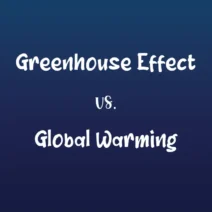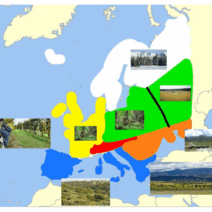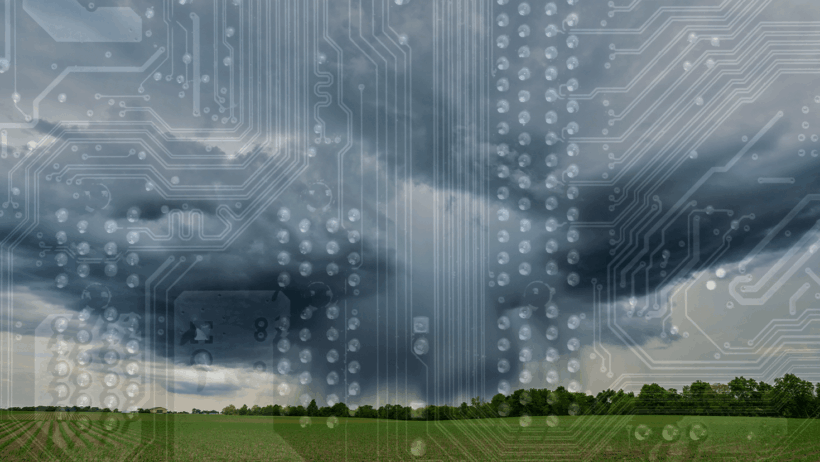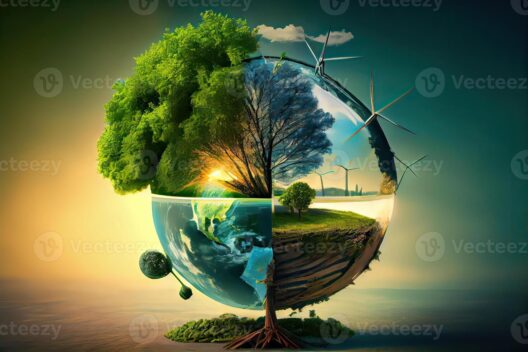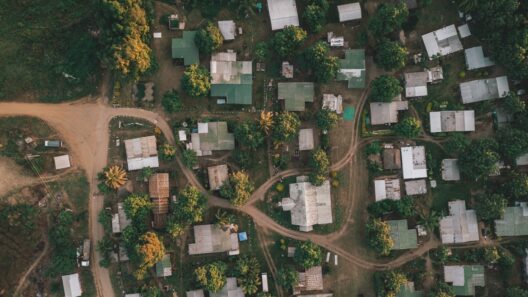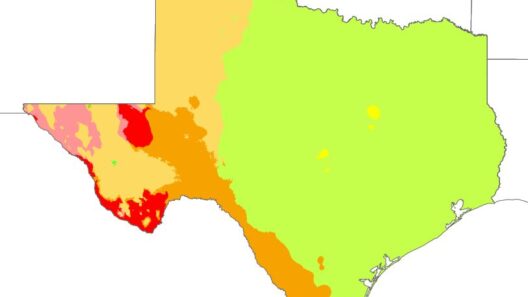When navigating the complex universe of environmental discourse, one might stumble upon a perplexing query that often tiptoes on the border between meteorology and climatology: Are weather and climate the same thing? This question, while deceptively innocuous, opens a Pandora’s box of nuanced discussions that merit deeper exploration. Understanding the distinction between these two concepts is paramount, not just for scientists and educators but also for the general populace invested in environmental dialogues and climate action.
To dissect this curiosity, it is crucial to define both terms with precision. Weather refers to the short-term atmospheric conditions in a given place at a specific time. It encapsulates phenomena such as temperature, humidity, precipitation, wind speed, and atmospheric pressure. These elements oscillate frequently, leading to diverse and sometimes unpredictable weather patterns. For instance, one might experience a serene sunny day that morphs into a tempestuous thunderstorm within hours. Weather forecasts, often disseminated through various media platforms, rely on intricate models that analyze current atmospheric data to project short-term climatic behavior.
On the other hand, climate is the long-term synthesis of weather patterns in a particular region, typically evaluated over a span of 30 years or more. It constitutes the average conditions, variability, and trends prevalent over extended periods. Climate paints a broader canvas than weather does, revealing the tendencies and fluctuations that define a region’s identity. For example, while the weather in a desert may fluctuate from day to day, the climate remains characteristically arid, signifying an overarching environmental consistency. From polar ice caps to tropical rainforests, each biome tells a tale of climatic narratives that have unfolded over millennia.
So, if weather is the flurry of daily atmospheric antics, then climate represents the enduring legacy of those antics. This distinction is paramount when discussing pressing matters such as climate change—a phenomenon that reflects gradual shifts rather than instantaneous alterations. The interplay of weather events, such as hurricanes, droughts, and unexpected cold snaps, can often mask the slow, insidious changes taking place in our climate systems.
Consider the general populace who latch onto weather headlines to gauge our planet’s health. A heatwave may prompt outcries about global warming, while a significant snow event might incite skepticism about climate change altogether. Such episodic events can shape public perception, sowing confusion between transient weather phenomena and the enduring nature of climate trends. This leads to an intriguing yet challenging conundrum: How do we communicate the long-term implications of climate change amidst the cacophony of daily weather reports?
One might playfully ponder: Are we, as a collective society, entangled in cognitive dissonance when we conflate weather with climate? The rapidity of weather changes can indeed lead to misunderstandings about the overarching climatic reality. It is not uncommon for individuals to dismiss climate observations because their daily weather contradictions seem at odds with the larger narrative. In essence, conflating weather with climate poses the risk of undermining the seriousness with which we must approach environmental issues.
This misunderstanding is particularly pronounced during extreme weather events, which are often exacerbated by climate change. For instance, record-breaking temperatures and intense storms no longer merely represent anomalies; they are becoming increasingly mediated through the lens of a warming planet. Yet, the immediate nature of weather can eclipse this connection. Individuals experiencing a snowstorm might dismiss discussions about global warming, focusing instead on their immediate discomfort rather than the long-standing climate data that informs these weather patterns.
Moreover, the confusion has implications for policymakers, educators, and scientists striving to galvanize public concern and action on climate change. When the public’s grasp of climate concepts is clouded by misconceptions about weather, the urgency and magnitude of the climate crisis may become diluted. This disparity illustrates a significant challenge: how can we bridge the gap between daily weather phenomena and the overarching narrative of climate health? Engaging educational curricula, employing innovative communication strategies, and fostering community discussions are some essential avenues that may pave the way toward a more informed public.
To cultivate a better understanding of these concepts, it is vital to foster an awareness of the interconnectedness of weather and climate while framing this knowledge within an engaging narrative. Utilizing vivid storytelling that encompasses historical climate phenomena and the science of weather forecasting allows for a more comprehensible exploration of this relationship. Moreover, emphasizing personal anecdotes and relatable experiences can help demystify these concepts and motivate proactive stewardship of our environment.
Ultimately, enhancing public comprehension of the distinction between weather and climate is not merely an academic exercise; it is a necessary step toward effective climate action. By acknowledging the immediate nature of weather events while simultaneously addressing the chronic aspects of climate, we can cultivate a more climate-literate society. Understanding that weather may provide fleeting snapshots while climate narrates the overarching story strengthens our resolve to advocate for sustainable practices, thus ensuring that future generations inherit a world aware of, and responsive to, the nuances of our environment.
The dance between weather and climate is intricate and deeply woven into the fabric of our daily lives. As we grapple with the complexities of environmental change, let us remain vigilant in our pursuit of knowledge, and encourage a more profound dialogue that dismantles misconceptions. Only then can we rise to the challenge of safeguarding our planet’s future, equipped with a clearer understanding of the true implications of our climatic reality.
